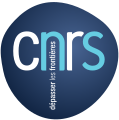Neopterin and CXCL-13 in Diagnosis and Follow-Up of Trypanosoma brucei gambiense Sleeping Sickness: Lessons from the Field in Angola
Résumé
Human African Trypanosomiasis may become manageable in the next decade with fexinidazole. However, currently stagediagnosis remains difficult to implement in the field and requires a lumbar puncture. Our study of an Angolan cohort of T. b.gambiense-infected patients used other staging criteria than those recommended by the WHO. We compared WHO criteria (cellcount and parasite identification in the CSF) with two biomarkers (neopterin and CXCL-13) which have proven potential todiagnose disease stage or relapse. Biological, clinical, and neurological data were analysed from a cohort of 83 patients. A neopterinconcentration below 15.5 nmol/L in the CSF denoted patients with stage 1 disease, and a concentration above 60.31 nmol/Lcharacterized patients with advanced stage 2 (trypanosomes in CSF and/or cytorachia higher than 20 cells) disease. CXCL-13levels below 91.208 pg/mL denoted patients with stage 1 disease, and levels of CXCL-13 above 395.45 pg/mL denoted patients withadvanced stage 2 disease. Values between these cut-offs may represent patients with intermediate stage disease. Our work supportsthe existence of an intermediate stage in HAT, and CXCL-13 and neopterin levels may help to characterize it.
Domaines
Santé publique et épidémiologie| Origine | Publication financée par une institution |
|---|








